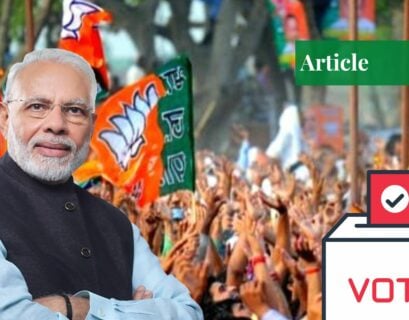Ms Warisha Rashid is a Ph.D. Scholar at the Department of Strategic Studies (DSS), Air University Islamabad.
The book authored by Dr. Adil Sultan titled “Universalizing Nuclear Nonproliferation Norms: A Regional Framework for the South Asian Nuclear Weapon States” explains that nuclear weapons as having a disastrous capacity which has made this technology certainly a cause of concern for the nuclear as well as non-nuclear weapons states.
Universalizing Nuclear Nonproliferation Norms depicts challenges that the NPT is facing due to its non-international nature, the reasons why states go nuclear, the approach of India and Pakistan towards disarmament and nonproliferation, the illustration of other technology control regimes, nuclear confidence-building measures, and the regional non-proliferation regime in the South Asian context.
While South Asian states hold that the reason behind India’s acquisition of nuclear weapons was because of its conflict with China in 1962, Dr. Adil Sultan illustrates that India began its dual-track nuclear program during the 1950s when it had absolutely no threats from the neighboring states. Moreover, in the post-Indo-China conflict of 1962, it took India almost ten years to conduct its nuclear tests during 1974 which was labeled as Peaceful Nuclear Explosion (PNE). This demonstrates that India acquired nuclear weapons initially for prestige and later for domestic politics and security.
Universalizing Nuclear Nonproliferation Norms gives a very comprehensive view of the NPT and other non-proliferation regimes. It highlights the discriminatory nature of the NPT i.e. those states who have tested their nuclear weapons before 1st Jan 1967 are recognized as nuclear-weapon states while those who acquired or tested after 1967 are considered to be non-nuclear-weapon states (NNWS).
The Director General of IAEA, Mr. Elbaradei, has stated that the NPT does not legitimize or delegitimize the status of nuclear or non-nuclear weapons status of the states, keeping the testing by Pakistan and India after the cutoff date of NPT in view. Furthermore, the biased and discriminatory nature of NPT also includes the two categories of haves and have-nots, as well as structural deficiencies to address the issues of implementation, accountability, or compliance.
The author has also stipulated that challenges faced by NPT include the non-universal nature of the NPT which could not bring states like Israel, Pakistan, and India under its crease which provides incentives to all NNWs to acquire nuclear weaponry. Secondly, the issue of internal non-compliance considering the cases of North Korea and Iran.
It also highlights the double standards of NPT obligatory articles such as Article I (obligates states not to acquire NW technology) and Article II (NPT states to honor the safeguards of IAEA) overlapping with Article IV (that gives the right to develop nuclear energy for peaceful purposes). Due to such overlapping and conflicting obligations, NPT has failed to bring out sincere efforts towards disarmament.
Dr. Sultan, however, also stresses the positive role of the NPT as it prevented the world from becoming a nuclear world as predicted by President Kennedy as well as helping in dismantling the nuclear program of Libya and Iraq. Another accreditation of NPT is that if Ukraine, Kazakhstan, and Belarus had not willingly returned their nuclear arsenals to Russia, they would have declared themselves as nuclear-weapon states (NWS) in contemporary times and would have created a disastrous outcome in the current scenario.
It has been emphasized that South Asian countries that possess nuclear weapons actively participate in all nuclear-related discussions. Both India and Pakistan had their justifications for rejecting the CTBT and the NPT, as well as several additional considerations that contributed to their opposition to the CTBT. While Pakistan was more focused on preventing NNWS from acquiring nuclear weapons and envisioned the NPT as a milestone in history, India was outspoken against NPT and was in favor of having a balanced and non-discriminatory approach towards NWS and NNWS by NPT.
The author further explains the export control regimes that assist the trade in WMDs and nuclear weapons. These regimes which cover the transfer of sensitive material associated with nuclear technology include the Missile Technology Control Regime (MTCR), Nuclear Suppliers Group (NSG), Wassenaar Arrangement (WA), The Australian Group (AG), and Multilateral Nuclear Approaches (MNAs), but they have been advancing the interests of major world powers for some time now.
The second last part of the book highlights the confidence-building measures by South Asian states, particularly India and Pakistan. Interestingly, Pakistan has been trying to convince the regional as well as global community towards declaring South Asia as a nuclear weapons-free zone through different initiatives from 1978 to 1994 but has failed as India could not comply with the proposal put forth by Pakistan. Pakistan also offered India to join NPT, but India refused as it would join the NPT only with the status of NWS and not NNWS.
Furthermore, the author has crafted out the controversies that have emerged from the nuclear doctrine of India i.e. using the term “credible deterrence” instead of credible minimum deterrence. Similarly, India’s threat of massive retaliation entails a retaliation with nuclear weapons in response to biological or chemical weapons, even if nuclear weapons are not used; such posturing nullifies the NFU commitment of India.
Lastly, the author has suggested a Regional Nonproliferation Regime (RNR) in place of the NPT to encourage India and Pakistan to demonstrate their support towards nonproliferation and disarmament. The author has very keenly integrated the proposed RNR structure with that of the NPT articles.
Dr. Sultan also has pointed out the obstacles towards the materializing of the RNR, which includes the willingness of both states to improve bilateral relations that have been stunted since 2012. India believes it already enjoys the same benefits as the NPT’s NWS. Moreover, India is reluctant to engage in any sort of bilateral arrangement with Pakistan due to various factors.
If you want to submit your articles, research papers, and book reviews, please check the Submissions page.
The views and opinions expressed in this article/paper are the author’s own and do not necessarily reflect the editorial position of Paradigm Shift.



















